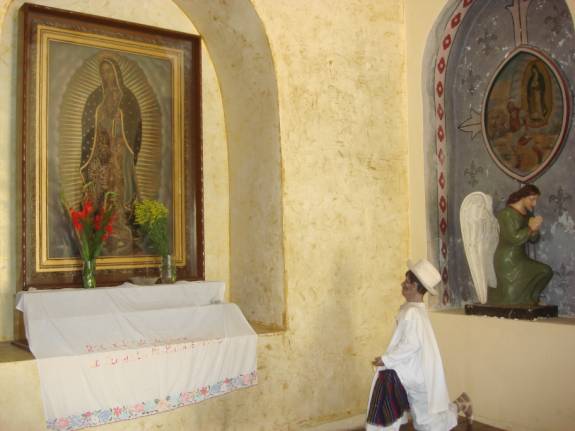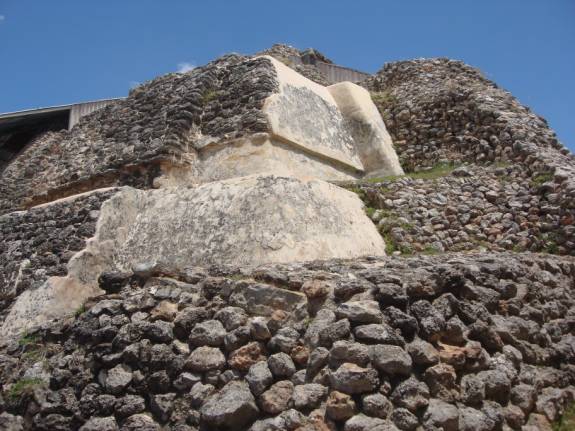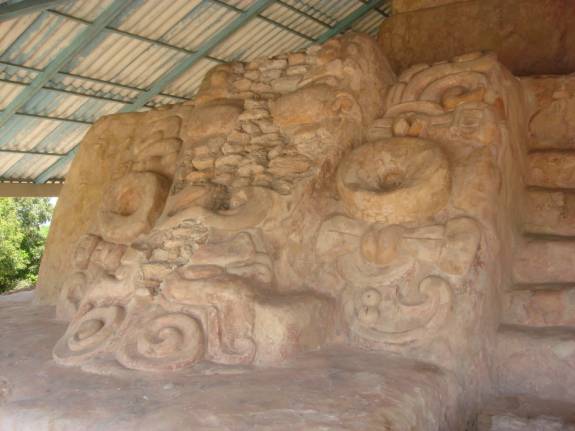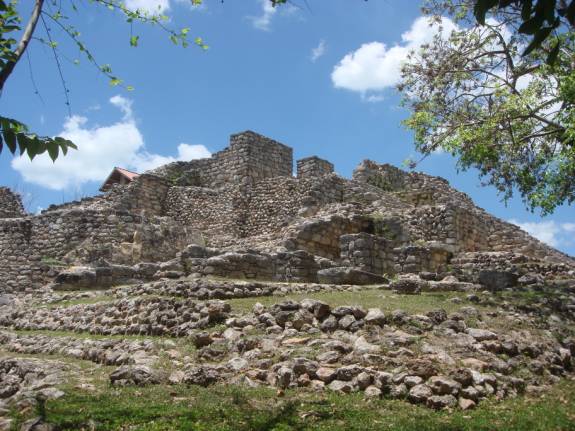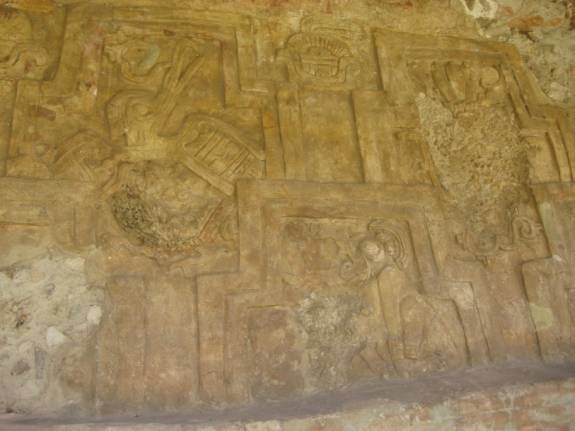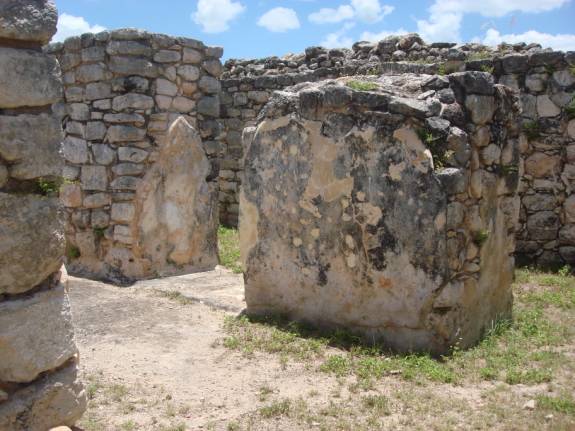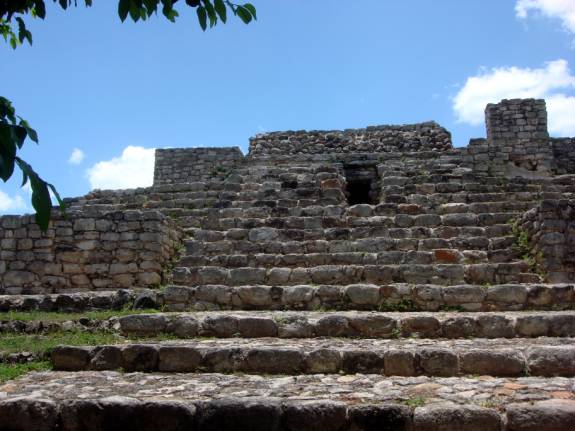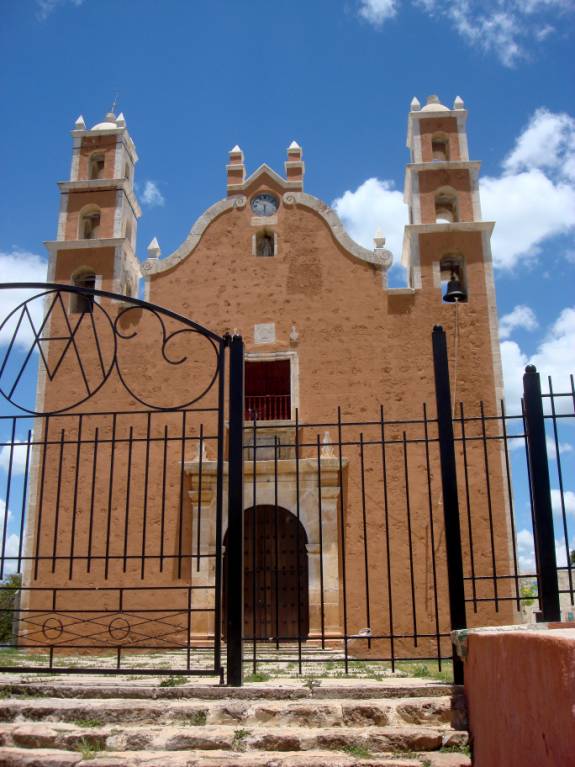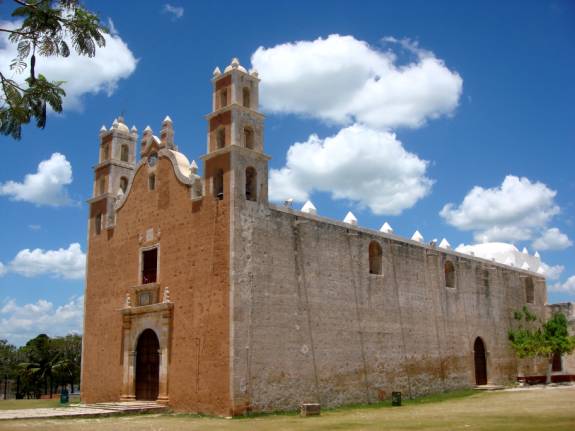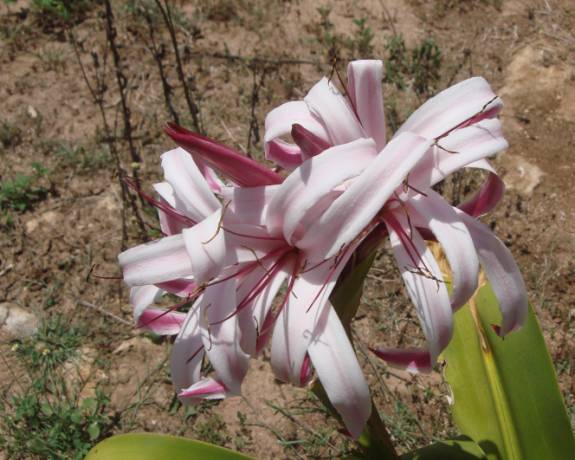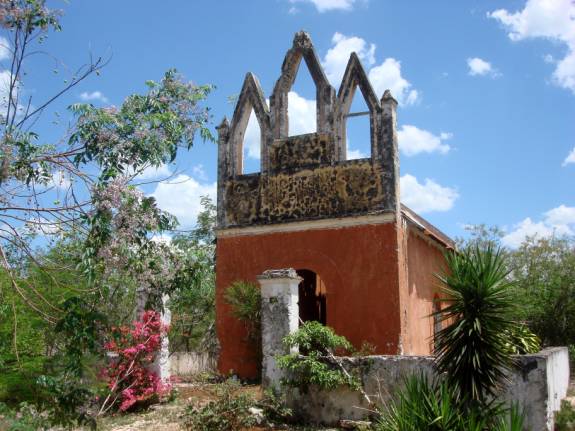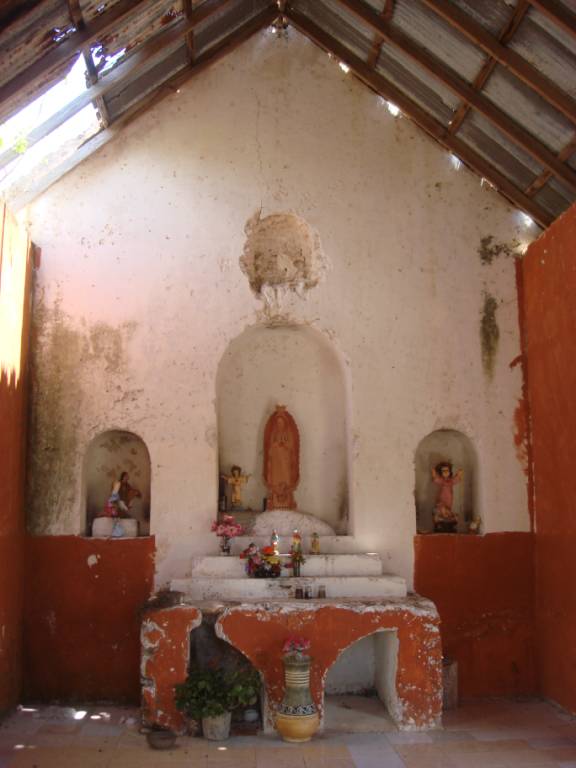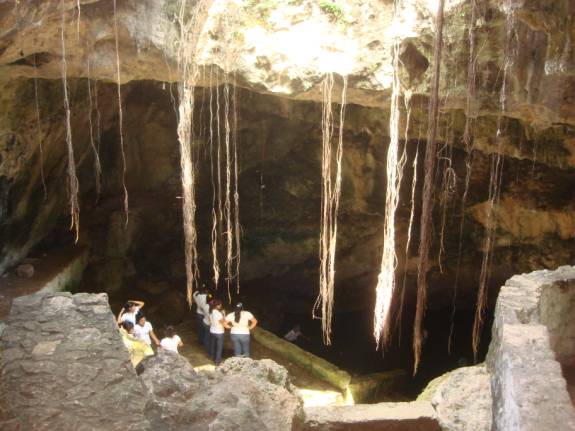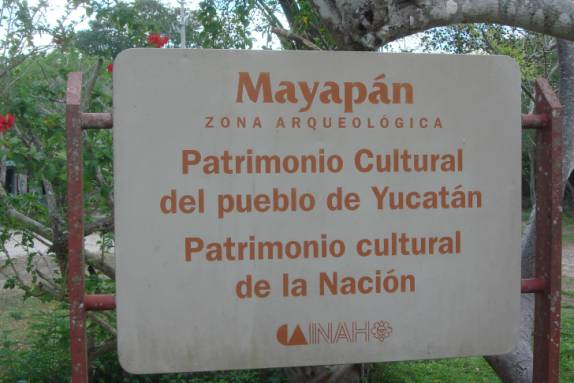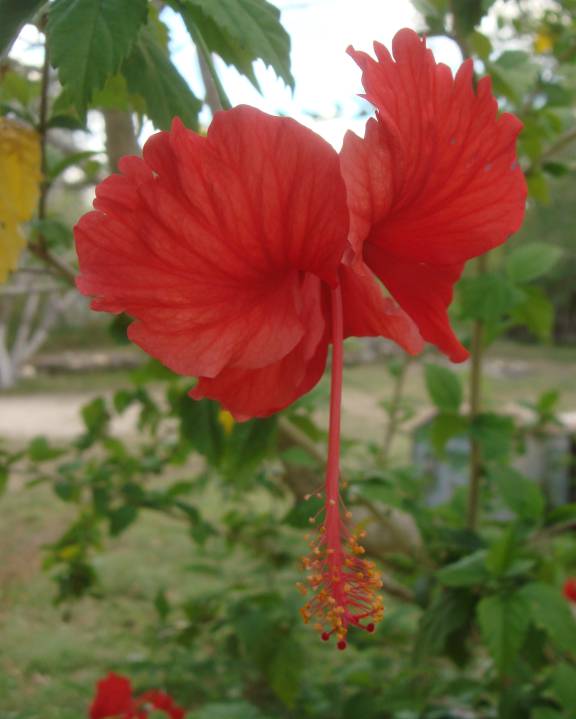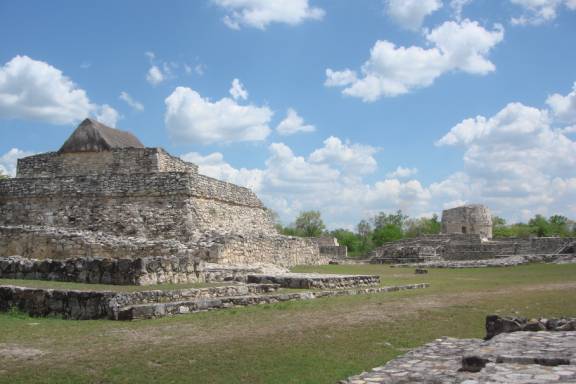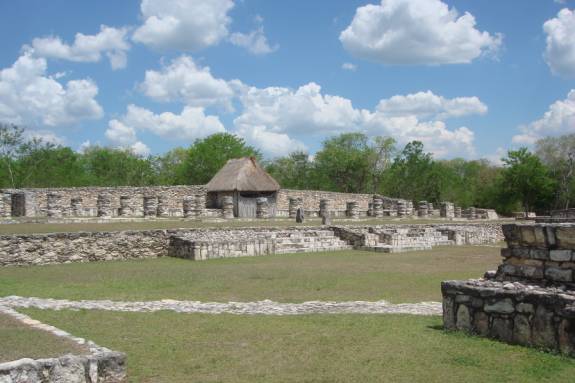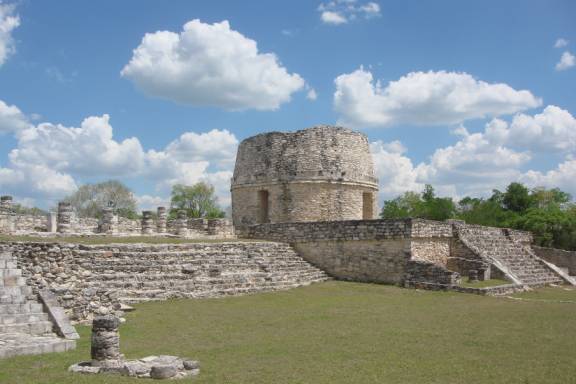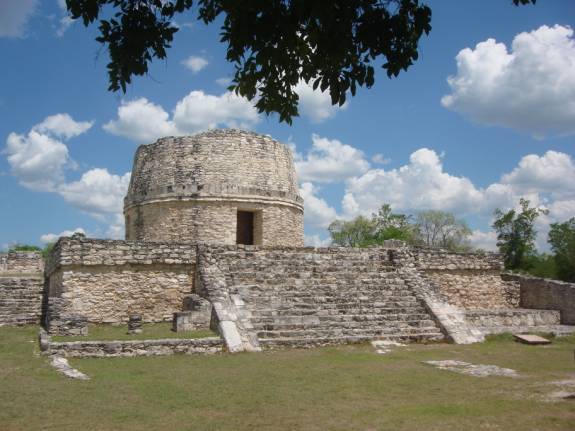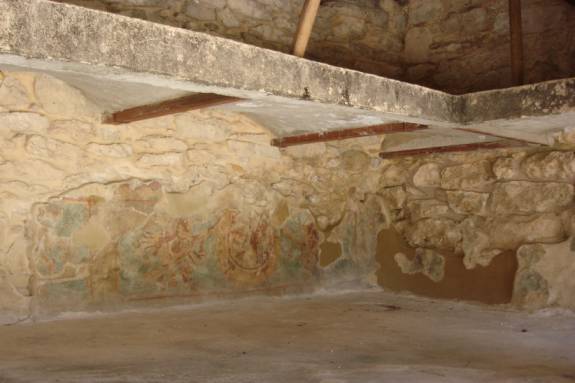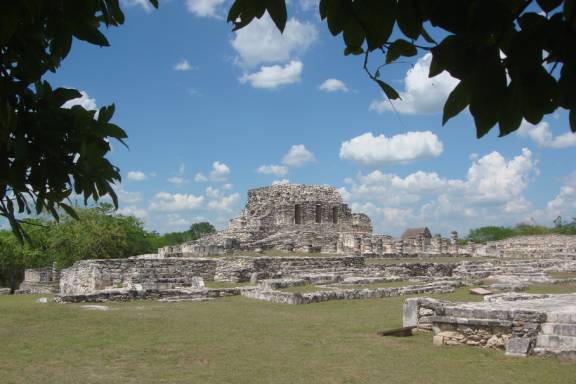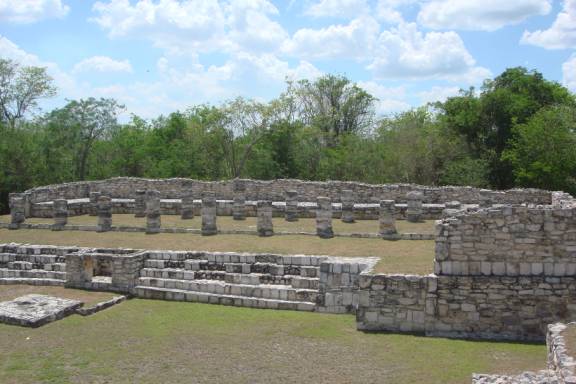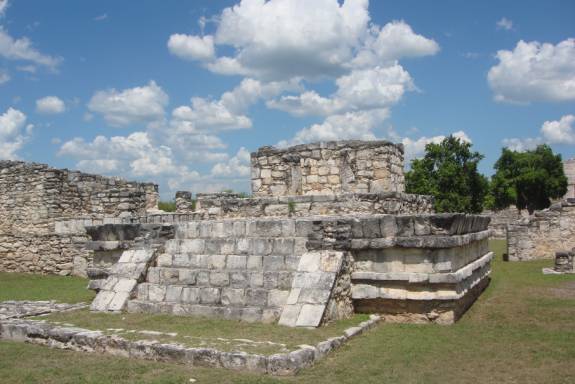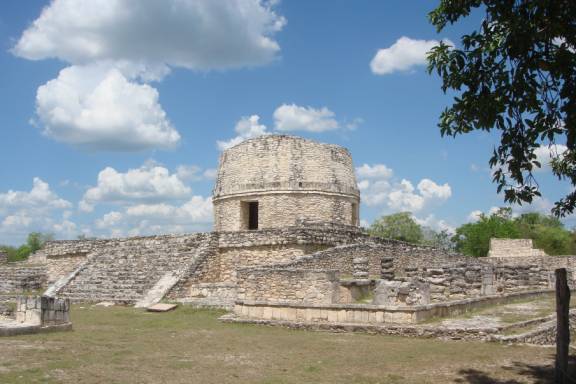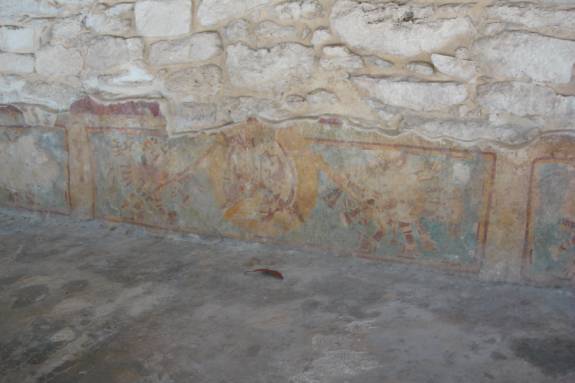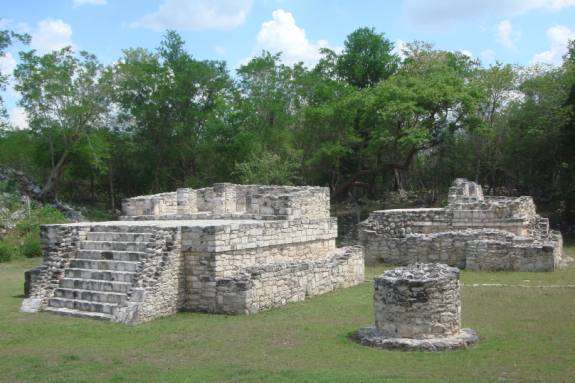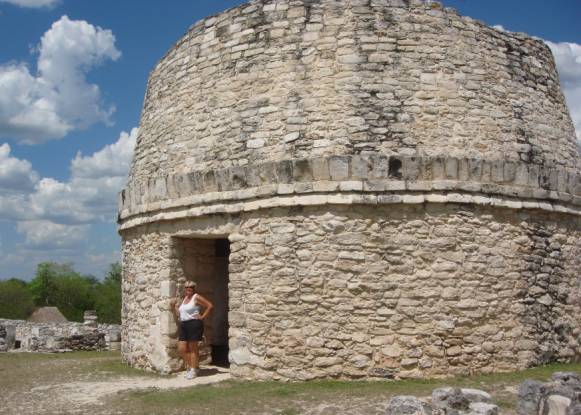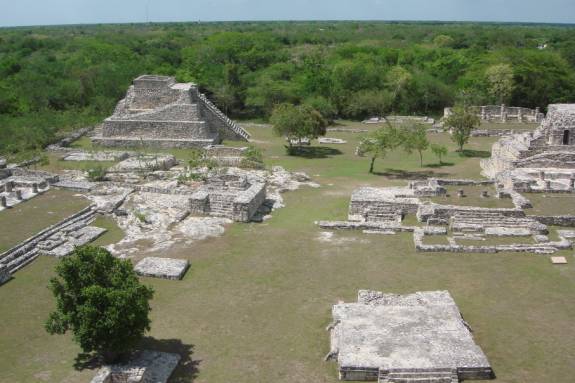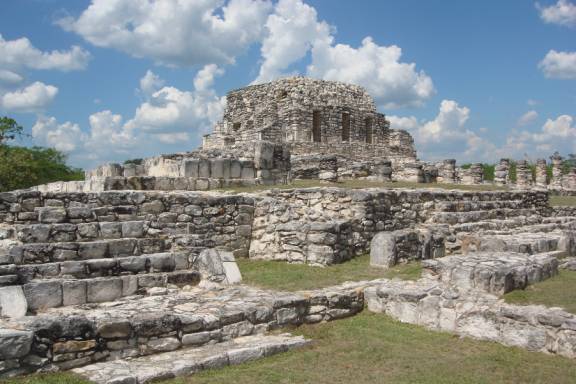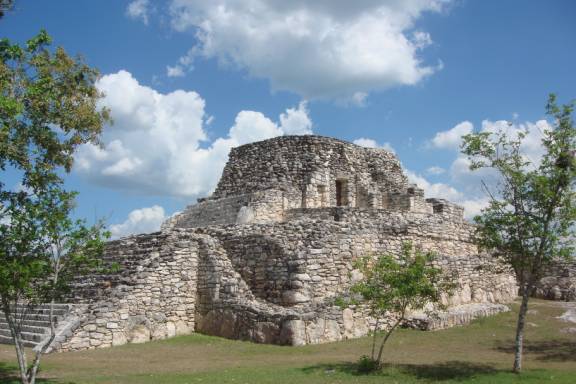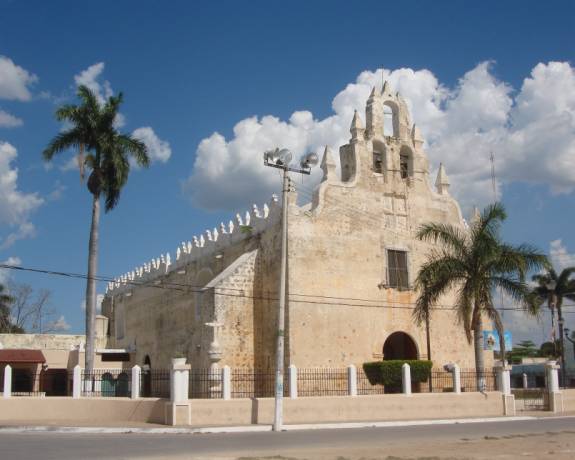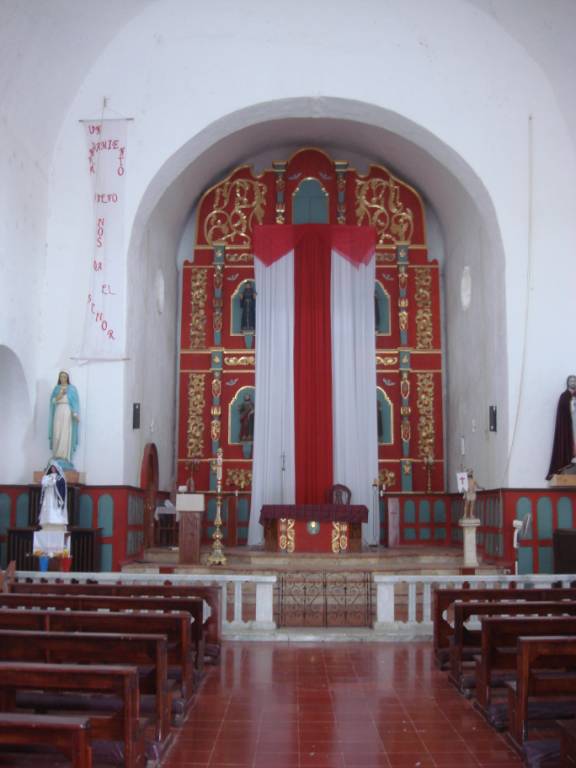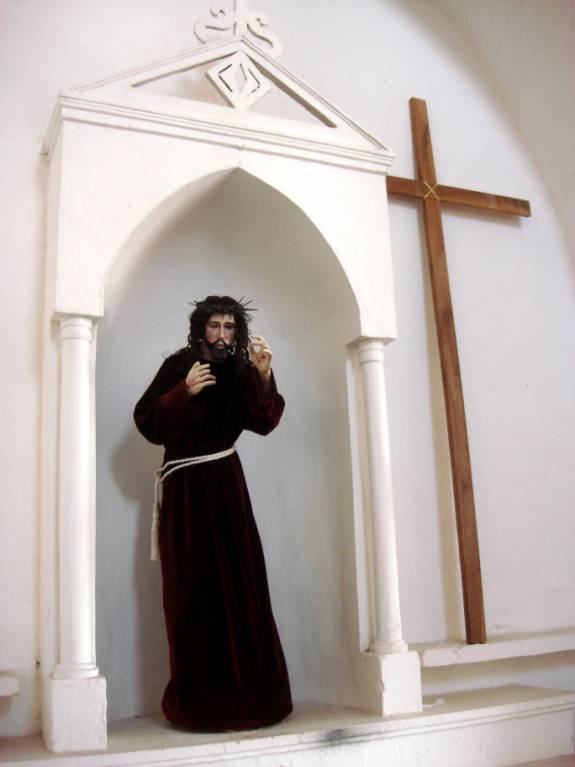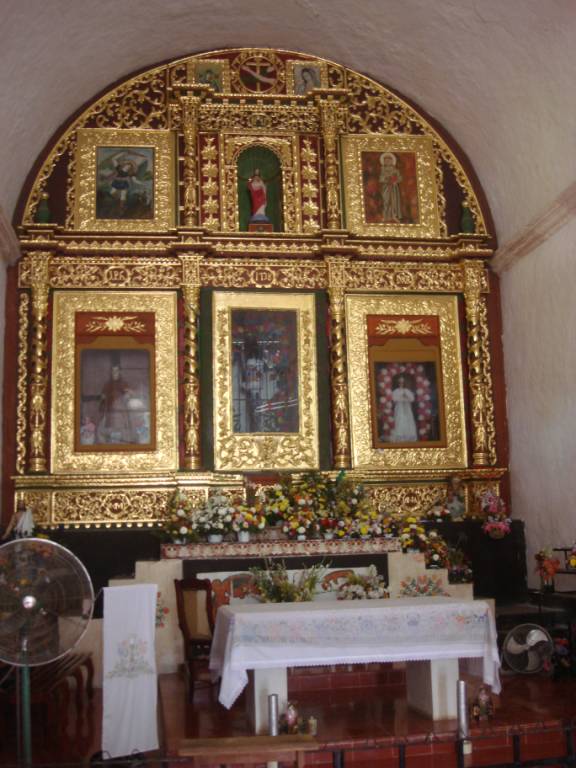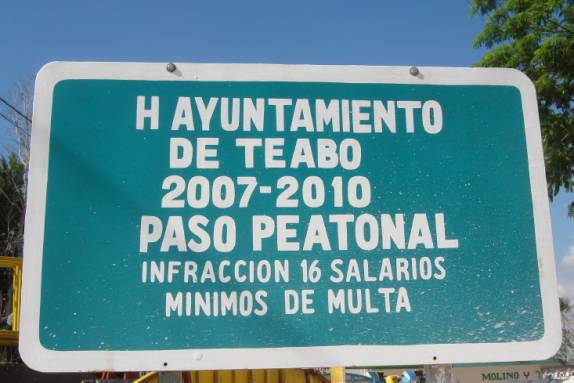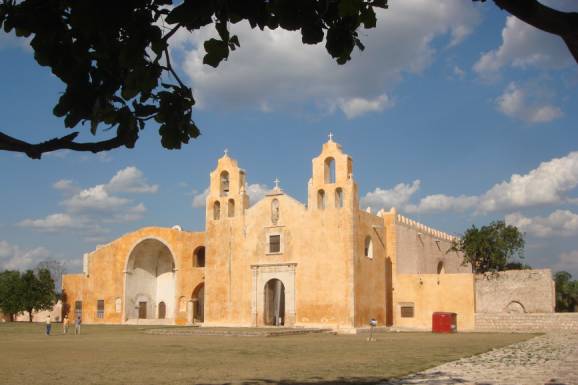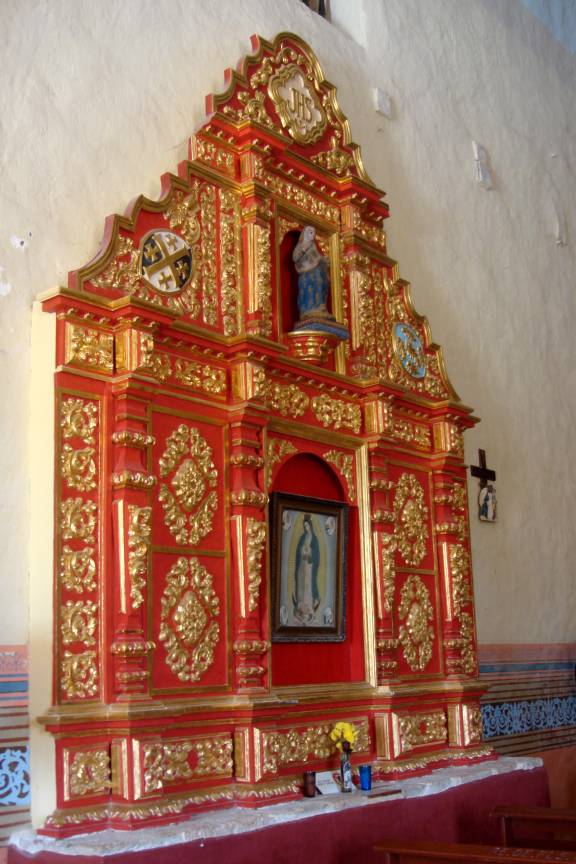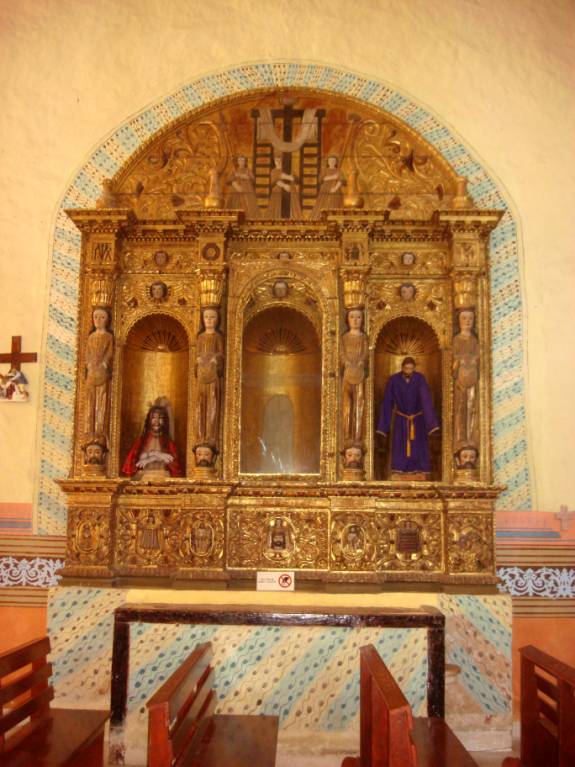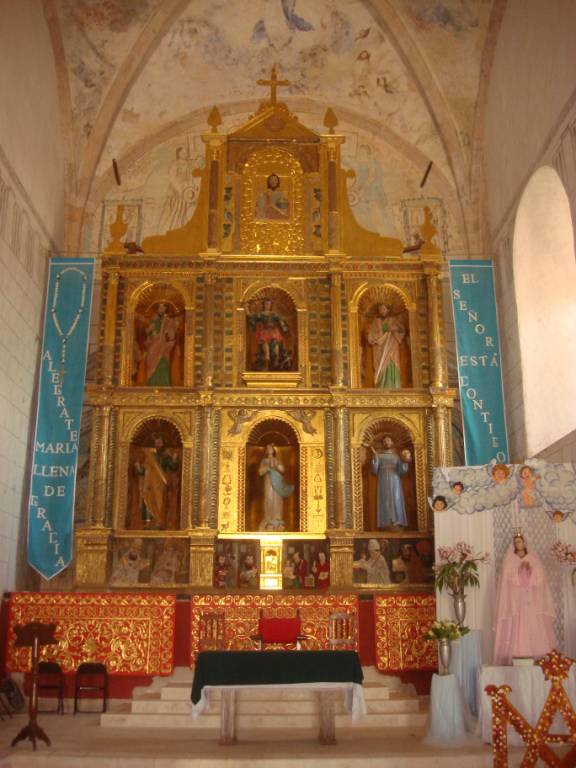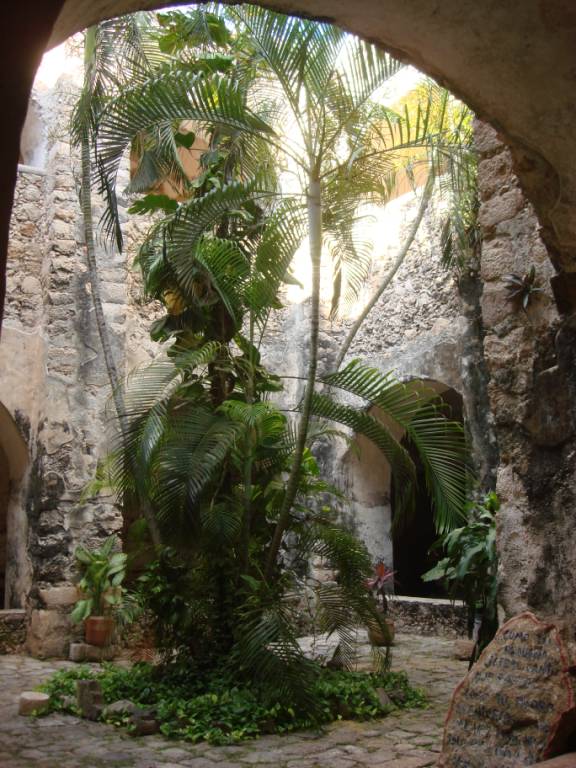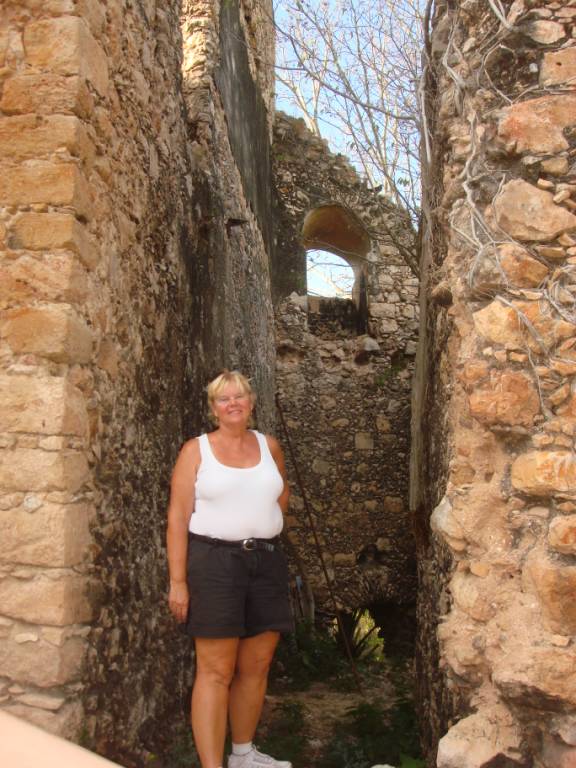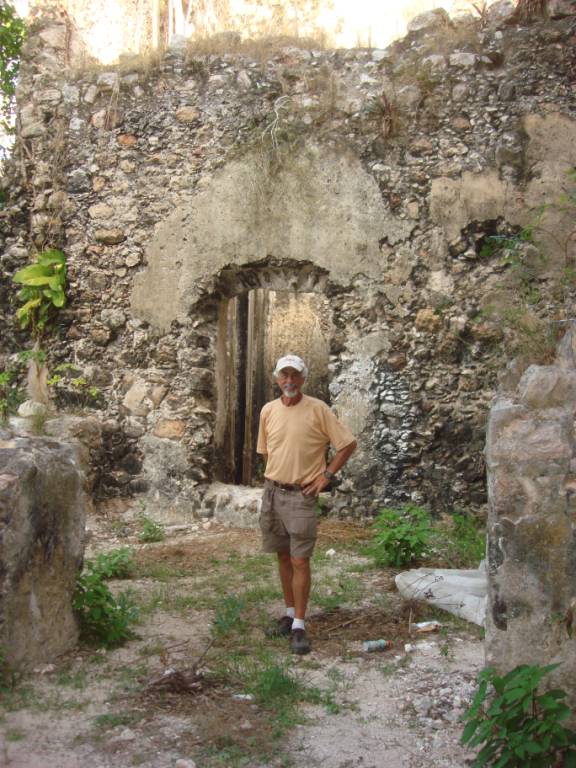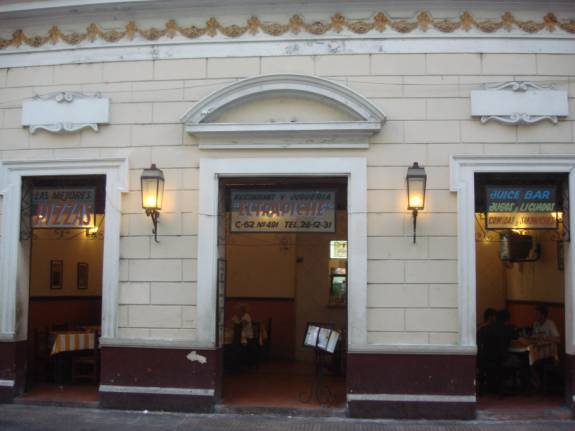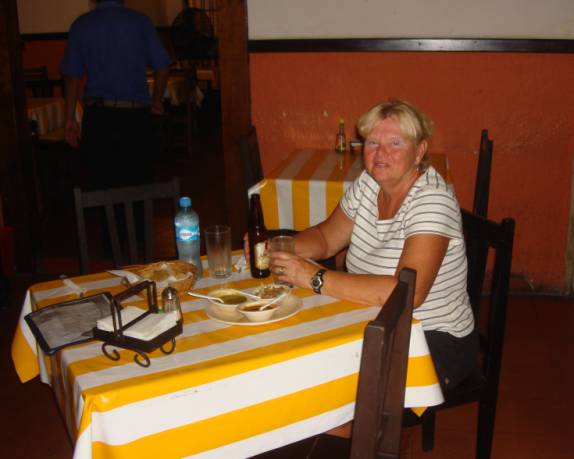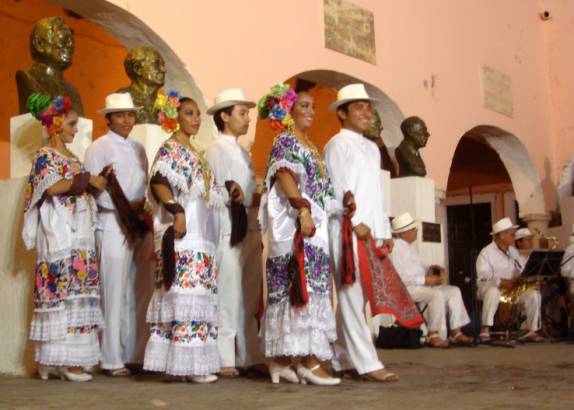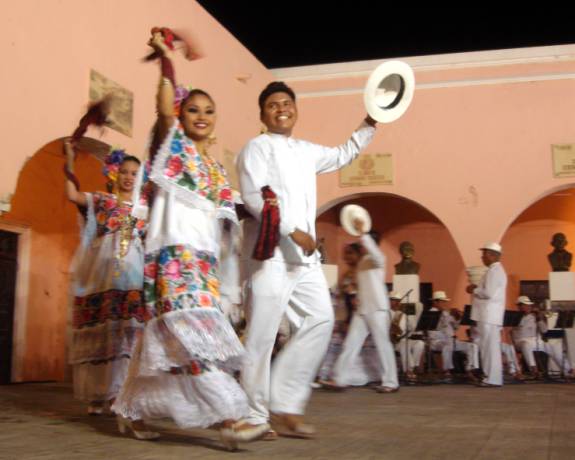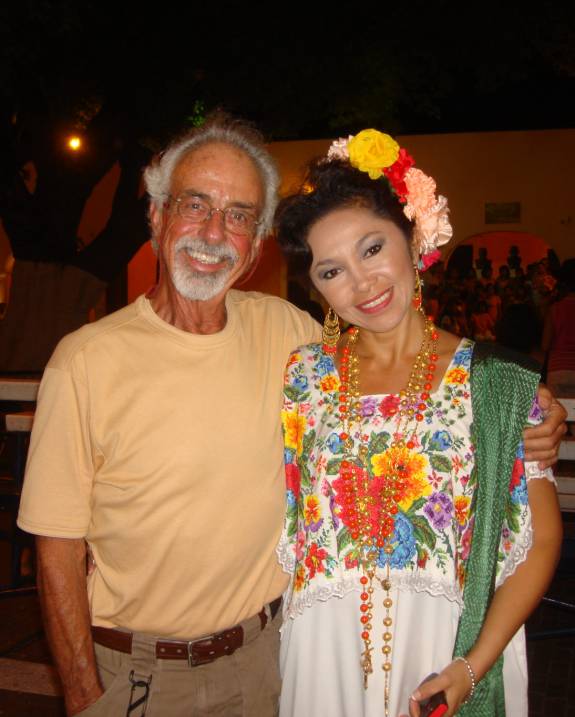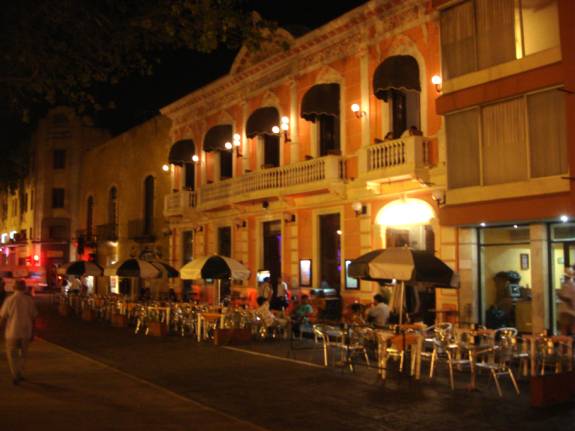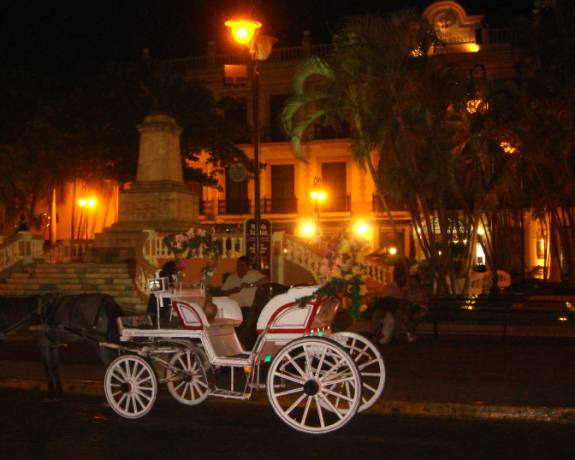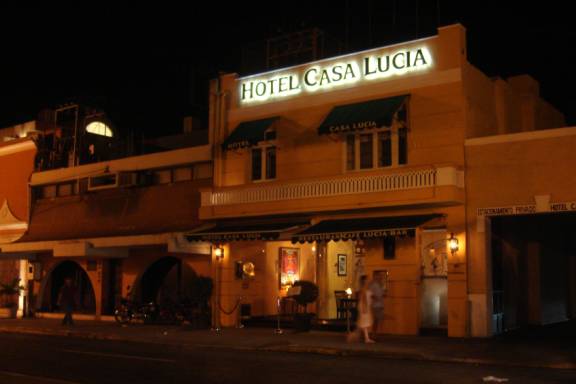|
|
|
|
Site Index:
|
UPDATE#17
05/06/2010
Howdy
Everybody, The adventures
of 2006, 2007, 2008, 2009, and thru 05/05/2010 have been published on the
website. We continue with the
latest edition. UPDATE
2010 #17 05/06/2010 At last update,
we were traveling on a Yucatan adventure in Mexico.
Welcome back to our continuing adventure… 05/06/10
WEDNESDAY MERIDA, RUTA DE LOS
CONVENTOS, MERIDA
Our plan for the day took us southeast of Merida along the Ruta de Los
Conventos and included visits to some of the Yucatan’s lesser-known Mayan
archaeological sites. ACANCEH,
YUCATAN Acanceh
is a small, peaceful town of a several thousand people. In the center of town,
“The Square of Cultures” is a mixture of Mayan, Colonial, and modern
architecture. Instead of the usual park found in the center of colonial towns,
there is a soccer field. Adjacent to the field, there is a Franciscan church,
“Nuestra Senora de la Natividad,” built in the 16th century. On both sides
of this there are Mayan pyramids with three terraces and four flights of steps.
Near the Palace of Stuccos is the former
convent and church of the Virgin of Guadalupe…
The Palace of the Stuccos building has a beautiful frieze, elaborated in
stucco. The lower cornice is decorated with astronomical symbols while the upper
is composed of two series of step lines in battle style. It contains stylized
figures in the lower level and mammals and birds in the upper. The Acanceh
architecture belongs to the initial classical period (200-600 a.c), The
construction is based around piled blocks of stone and are similar to the type
found in Izamal.
It is quite an effort to climb up on the rough stone structures,
especially in this record-breaking heat wave.
Judy is an intrepid champ when it comes to these kinds of adventures.
Stucco covered figures adorn both sides of a stairway at the top.
Another pyramidal structure is located behind the Palace.
"The Square of Cultures" is the town square, which includes
prehispanic, colonial, and modern constructions.
The Iglesia de Nuestra Señora de la Natividad was built in the 16th
century. It is a superb example of
the Franciscan style widely found in this region.
The Pyramid, located several blocks away from the others, is a tall,
stepped structure consisting of three terraces.
It features four flights of steps that provide access and evidence of two
stucco masks.
Although our guide spoke not a word of English, I was able to garner
enough information to make the visit meaningful.
He was knowledgeable and very friendly.
Guide service is mandatory at these sites and only they have the keys to
the security gates.
TECOH,
YUCATAN
Church and convent dedicated to the Virgin of the Assumption in Tecoh.
We spotted an unmentioned chapel just off the main road. There were no signs to tell us the name.
We found it to be quaint yet charming.
TELCHAQUILLO,
YUCATAN
The facade of the Franciscan church in Telchaquillo.
A staircase in the center of the town park leads to a dim cenote.
A friendly local resident kindly warned us that it might not be safe to
go into the cenote area. I am not
sure if he meant because of slippery conditions or if he was warning us of
possible rowdiness or theft from the groups of young people.
Either way, we respected and heeded his friendly input and decided to
move on.
MAYAPAN
ARCHAEOLOCICAL SITE
The Mayapan archaeological site is located about 30 miles southeast of
Merida. The ruins are dated to the end of the Post Classic Period and are
regarded as one of the last Mayan projects. Archaeologists date the
founding of Mayapan by Kukulkan in 1007. The city did not gain dominance
until near the 13th Century and subsequent to the fall of Chichen
Itza. In 1194, Mayapan gained power and capitol status by capturing
Chichen Itza and Uxmal, thusly forming the League of Mayapan.
Mayapan elevated to become the most important center of the Maya
civilization until the advent of the Spanish Conquest. A uniquely
walled city, Mayapan covers more than 2.5 square miles with one central plaza in
which the principal buildings are situated. Few Maya cities were built
with surrounding walls indicating instability of relations between Mayapan and
its neighboring powers. Inside its walls and fortifications, as many as
3000 dwellings are believe to inhabit and support a population of nearly 12,000.
The construction and decorative effects at Mayapan are much less ornate than
Uxmal and Chichen Itza. The rulers of Mayapan may have been more focused
on security, defence, and warfare than attempting to placate the gods with
temples of extravagance.
Mayapan continued to prosper between 1250 and 1450. The mid 1400's
marked the end of the city when a rebellion overthrew Mayapan and nearly
destroyed the city.
Except for two student researchers, we had the entire site to ourselves.
This round temple differs from all other Mayan constructions, although it
does have resemblances to the Caracol at Chichen Itza.
The temple has four entrances and may have been significant in the
worship their wind god.
These painted murals remain visible are similar in style to those used during
the post classic period. These murals depict scenes of battle and events
associated with a death cult. This
may indicate links and tribal relations with others from the high plains of
central Mexico.
Styles and architecture have many resemblances to those of Chichen Itza,
although generally on a smaller scale.
El Castillo de Kukulcán…
Our quest for adventure continued to include more of the Ruta del
Conventos (Route of the Convents). We
attempted to take in as many as we could find of the historical churches and
convents located in the region southeast of Merida.
Welcome to VILLA DE TEKIT, YUCATAN…
Iglesia San Antonio de Padua in the Villa de Tekit…
MAMA, YUCATAN
Iglesia de la Asuncion in the Village of MAMA, YUCATAN…
CHUMAYEL,
YUCATAN
Chumayel is one of the 106 municipalities that make up the Mexican state
of Yucatan. It is located east of the state and approximately 70 miles south of
the city of Mérida. Her name is interpreted as "place where the gourd does
not burn”.
Iglesia de Chamayel…
TEABO,
YUCATAN
The name of this municipality, Teabo, in the Mayan language means
"your breath." (perhaps, tending more to like the ‘air you
breathe’). The economy is
principally based on agricultural cultivation of corn, beans, squash, etc. …
Iglesia de Teabo…
MANI,
YUCATAN
The town has an old Franciscan monastery established in 1549, the
Parroquia y Exconvento de San Miguel Arcangel.
It was here that Fray Diego de Landa made his “Act of Faith”, when he
ordered the burning and destruction of many documents and Mayan statues during
the Franciscan movement to convert the indigenous people to Catholicism.
In this one day, we had seen a lot, walked a lot, climbed a lot, and got
tired and hot a lot. We headed back
to Merida for R & R. MERIDA,
YUCATAN
Late in the afternoon, we returned to our Hotel Casa Lucia in Merida.
During our stays in Merida, we ate dinner at this restaurant, El Trapiche,
on several occasions. We enjoyed
the food preparations and the prices were economical.
In the evening, we attended a voice recital at the Centro Cultural Olimpo.
The modernized interior of the auditorium is a venue for frequent musical
and cultural events. The Centro is
located in a northern corner near the Plaza Grande.
On the street near our hotel, a group was performing folkloric dances in
the Plaza Lucia.
This gal performed some vocal songs, accompanied by the orchestral band.
Her voice was very delightful and her festive costume was impressive.
Again tonight, the streets become outdoor cafes and restaurants.
This one, the Café Peon Contreras, generally features live music.
Across the way on Calle 60, the patrons of La Bella Epoca restaurant and
café can enjoy fine dining and music.
Anyone for a horse-drawn carriage ride?
Tired from a long day of exploration and adventure, we welcomed the
comforts of our Hotel Casa Lucia. Having
the amenity of a secure parking area for our rented car provided an extra
benefit.
Our Yucatan based adventures will continue in the next update edition.
CONTINUING
UPDATES ARE IN PROGRESS…
WATCH
FOR THEM, COMING SOON… POST SCRIPT:
We sincerely hope that you will review the previous years of compilations
to give context to the current editions. Please
let us know if you have any special suggestions and thoughts.
REMEMBER: The website is now
fully active and you can visit it at any time.
You can also review any of the previous logs from the years 2006, 2007,
2008, and 2009 to learn more about the crew and their many adventures. Enjoy. ATTENTION:
SPECIAL NOTE:
You may contact us via email anytime. Thanks
for allowing us to share our life and adventures with you. Lotsa
Luv, Fred
Reed and Judy Law AMARSE MT40 "AMARSE"
is pronounced
"AM-ARE-SAY".
Our website is: www.amarse.net
. CONTINUING
UPDATES ARE IN PROGRESS…
WATCH FOR THEM, COMING SOON…
|
|
Fred H. Reed |
www.amarse.net © 2006 2007 2008 2009 2010 2011 |


